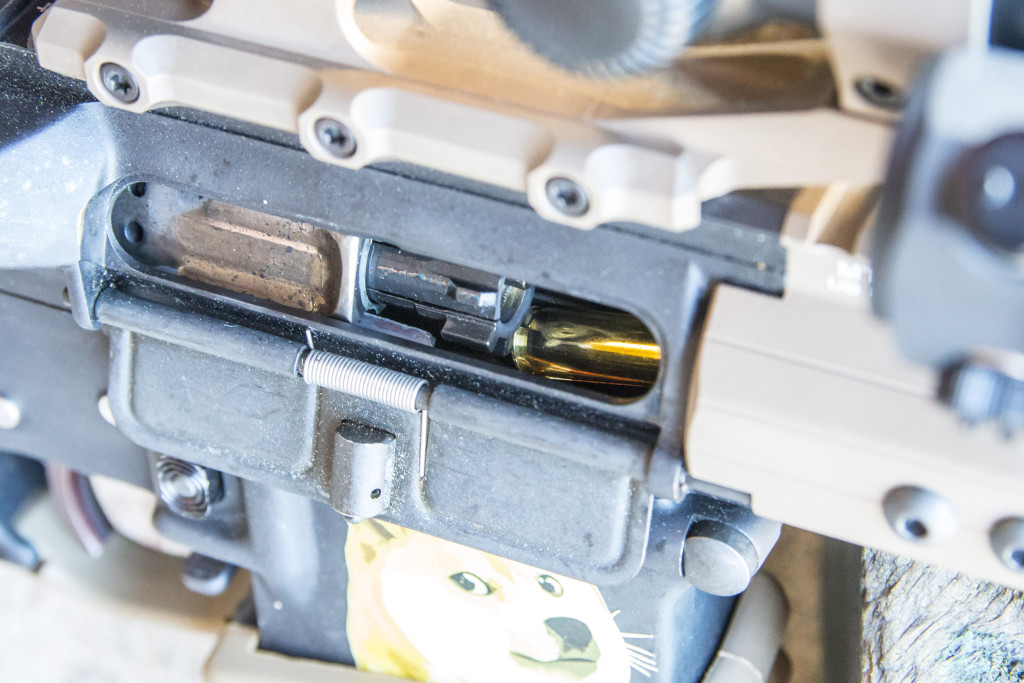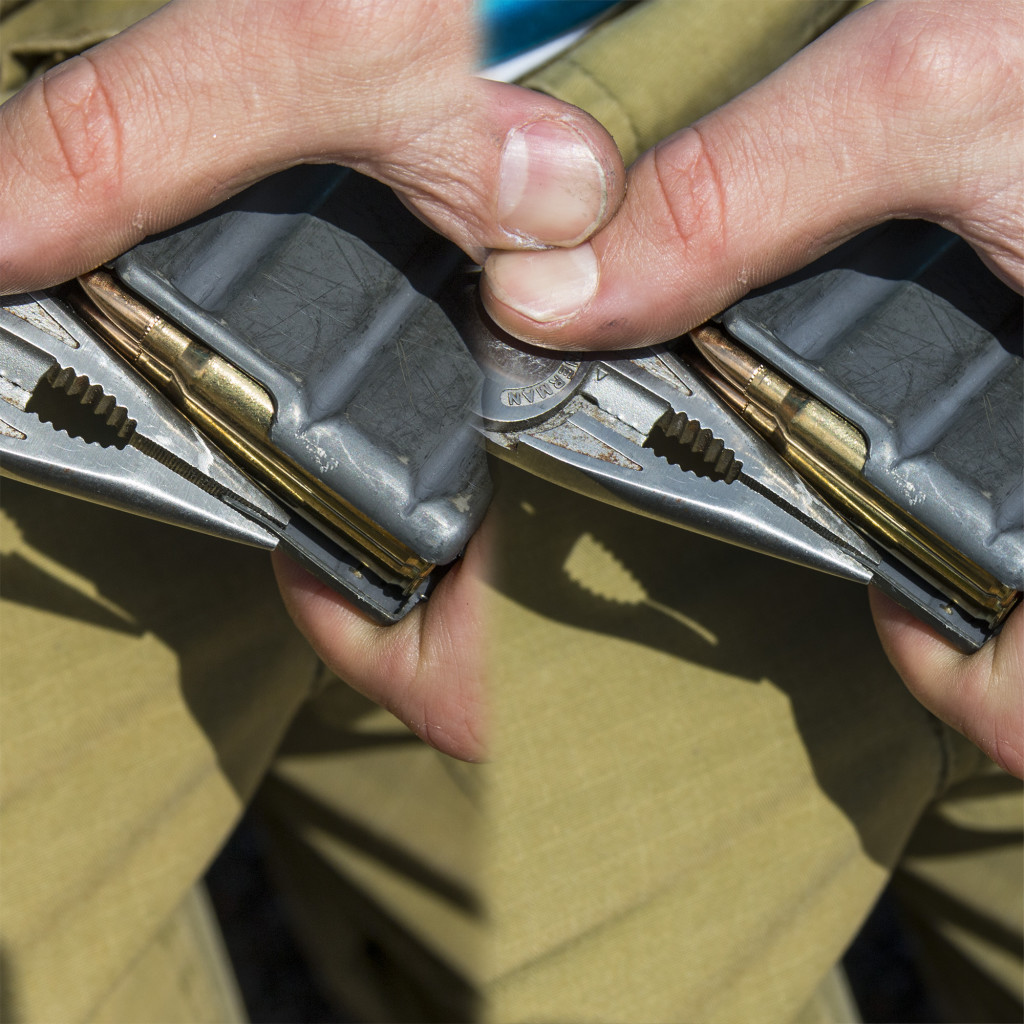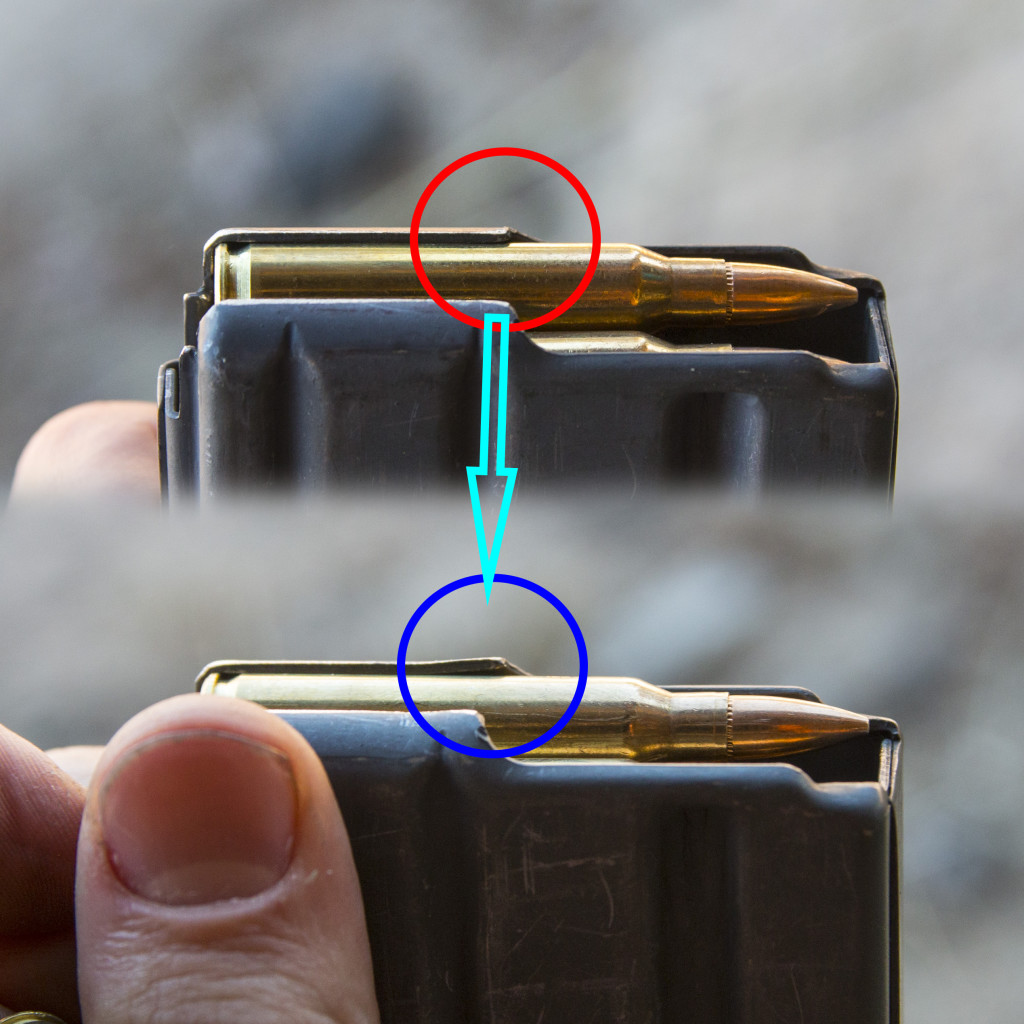I recently acquired some USGI style magazines. The magazines were Brownells branded and “3rd generation” (light brown colored and non-tilting follower). One note about the followers was that the “top round” bulge is on the other side than in magpuls and my previous usgi magazines (gen1 and gen2)
I ran into some problems while test firing the magazines in my tuned competition rifle: the action made some rounds stood up and collision to inside corner of the barrel extions and bolt slipped to the rim. This of course happened on stage 2 in a small weekly competition ( http://youtu.be/ISoByoDOwyY?t=16s )

I first was thinking about the adjustable gas block, zero-weight-buffer, too weak magazine spring and some other reasons but after fooling around for a while, a more experienced shooter informed me that back in the day it was custom to do some tuning when using USGI mags. The trick was to slightly bend the magazine lips from the front corner to allow the round feed more smoothly with less contact to the front of the mag. You could tell this difference even by extracting the rounds by pressing them out with a finger on the rim: the round easily gets stuck to the front of the mag with unmodified mags and the round exited the magazine a lot easier with modified, mags.
Easiest way to do the necessary modification was with Leatherman pliers: put the nose of the pliers around 5mm into the lip and squeeze the pliers closed. The combination of the form of the magazine and pliers forces the front of the lip to tilt a little outwards, making the work required for the fix only a small squeeze per lip! After the magazines were modified there were no more feeding issues.


I then looked into the old and used magazines that didn’t have any problems and they had similar gap, but without any necessary bending, possibly due to wear from all the previous usage.
